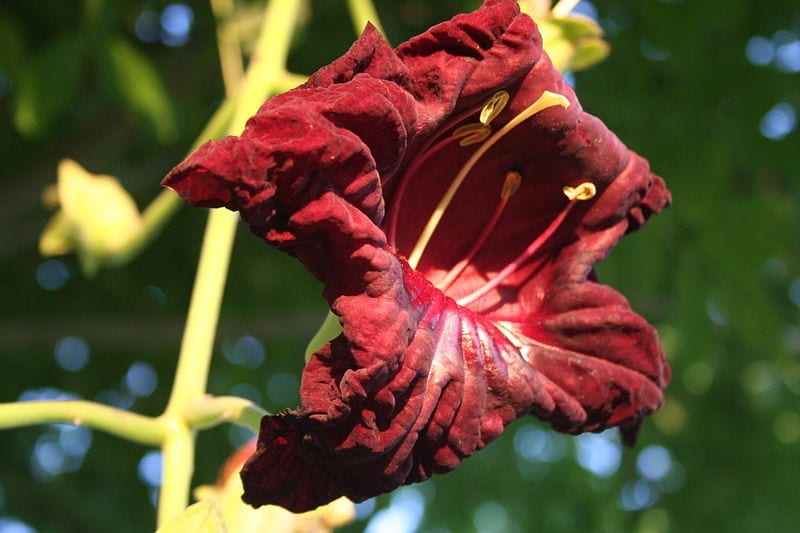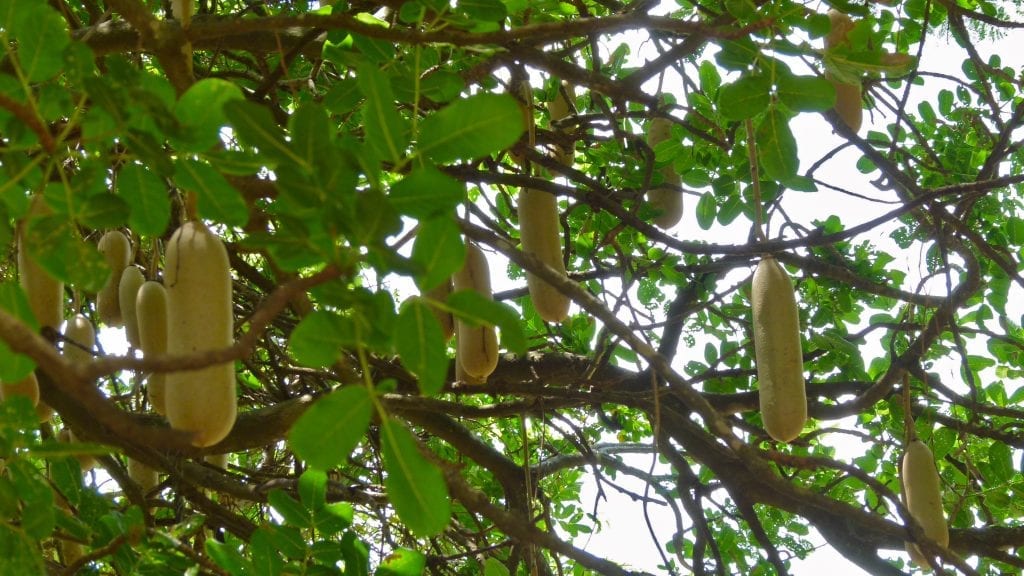
Image - Wikimedia / Marco Schmidt
La african kigelia It is a tropical tree native to the jungles of the country to which its surname refers. It is very interesting to grow in gardens with climates without frost, since its flowers are of a very striking red color.
If you are that lucky and need a species that is easy for you to maintain, Then we invite you to read everything that we are going to tell you about it.
Origin and characteristics

Image - Wikimedia / Bernard DUPONT
Our protagonist is an evergreen tree whose scientific name is african kigelia, although it is popularly known as the salami tree or the sausage tree. Reaches a height of 10-15 meters, with pinnate leaves composed of 8-10 oval-shaped leaflets up to 30cm in length.
The flowers are large, and are bell-shaped, with five petals. A smell arises from them that attracts bats, animals that are responsible for pollinating them. The fruit is a cluster with a high fiber content.
Uses
Apart from being used as an ornamental, it has other uses:
- Edible: in their place of origin, the fruits are consumed once cooked.
- Medicinal: the fruits are also used against syphilis and rheumatism, and the bark is effective against snake bites and to relieve toothache or stomach pain.
- Cosmetics: Kigellia extract is used in the formulation of cosmetics, body firming and breast products.
What are their cares?

Image - Wikimedia / Bernard DUPONT
If you want to have a copy, we recommend that you provide it with the following care:
- Location: the african kigelia It must be outside, in semi-shade.
- Earth:
- Garden: the land must be fertile, with good drainage.
- Pot: it is not a plant to have in a pot, but while it is young you can keep it with a universal cultivation substrate mixed with 20% perlite.
- Irrigation: it is advisable to water it 3-4 times a week in summer, and a little less the rest of the year.
- Subscriber: from the beginning of spring to the end of summer it has to be paid with organic fertilizers, once a month.
- Multiplication: by seeds in spring. Direct sowing in seedbed.
- Pruning: it will be enough to remove the dry, diseased, weak or broken branches.
- Rusticity: it does not resist the cold. It can be had only in tropical climates without frost.
What did you think of african kigelia?